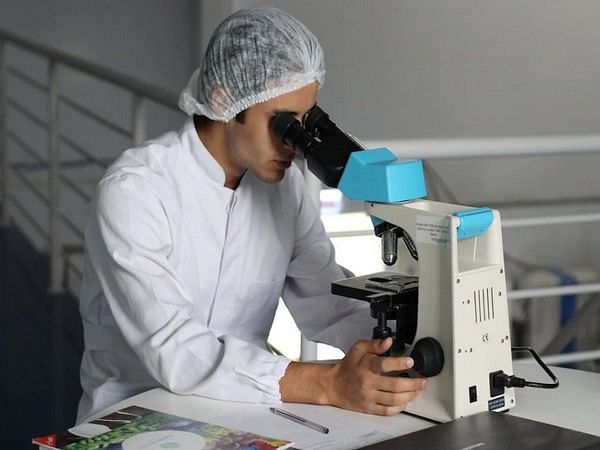California [US], November 4 (ANI): Recycling has a similar role in cells as it does in the more known macroscopic world. Cells regularly produce trash while carrying out their usual functions and gather broken parts.
Several recycling mechanisms have been evolved to make the greatest use of these resources and support homeostasis; among the many animal, plant, and fungal lineages, autophagy is one of the best-preserved.
Autophagosomes are tiny, capsule-like structures that transport materials floating in the cell to specialist organelles like lysosomes or vacuoles. When autophagosomes attach themselves to lysosomes or vacuoles, they produce autophagic bodies (ABs).
Autophagy is the process by which proteins in the lysosome or vacuole break down the phospholipid bilayers that envelop ABs in order to release the cargo within.
Previous studies identified the proteins Atg15, Pep4, and Prb1 as essential actors in this process. However, the relationship between these proteins and the underlying mechanisms remains unknown.
A research team from Japan’s Tokyo Institute of Technology has recently made significant progress towards solving this puzzle.
In a recent study led by 2016 Nobel laureate Professor Yoshinori Ohsumi and Assistant Professor Kawamata, scientists employed yeast as a model organism to shed light on some of the complexities of autophagy.
“The relative simplicity of yeast vacuolar enzymes was particularly advantageous for our study as it allowed us to clarify the relationship between protein- and lipid-breaking activity in the vacuole,” explained first author Kagohashi.
By applying in vitro assays involving lipid-degradation, the researchers demonstrated that Pep4 and Prb1 transform Atg15 into an ‘activated’ form. This step is necessary to enable Atg15 to break the phospholipid bilayer of ABs.
The team confirmed these findings by testing various Atg15 mutants and yeast strains lacking the genes coding for Pep4 and Prb1. By tagging Atg15 with a probe, they also pinpointed the modifications that Pep4 and Prb1 make to Atg15 within the vacuole.
The team delved deeper into how Atg15 breaks down the phospholipid bilayer through further experiments using isolated ABs. These analyses revealed, for the first time, that Atg15 has phospholipase B activity–this allows Atg15 to cleave phospholipid molecules at two specific locations, thus efficiently disrupting the phospholipid membrane.
In summary, this work deepens our understanding of crucial cellular processes, as Dr. Kawamata remarked, “Characterization of lipid-breaking activity in the vacuole/lysosome is essential to understand how lipids are recycled. This study provides insights into the recycling of membrane lipids and informs work on a range of metabolic disorders.” As she notes, autophagy is implicated in many diseases and can also be an attractive drug target for new therapies. (ANI)
This report is auto-generated from ANI news service. ThePrint holds no responsibility for its content.



